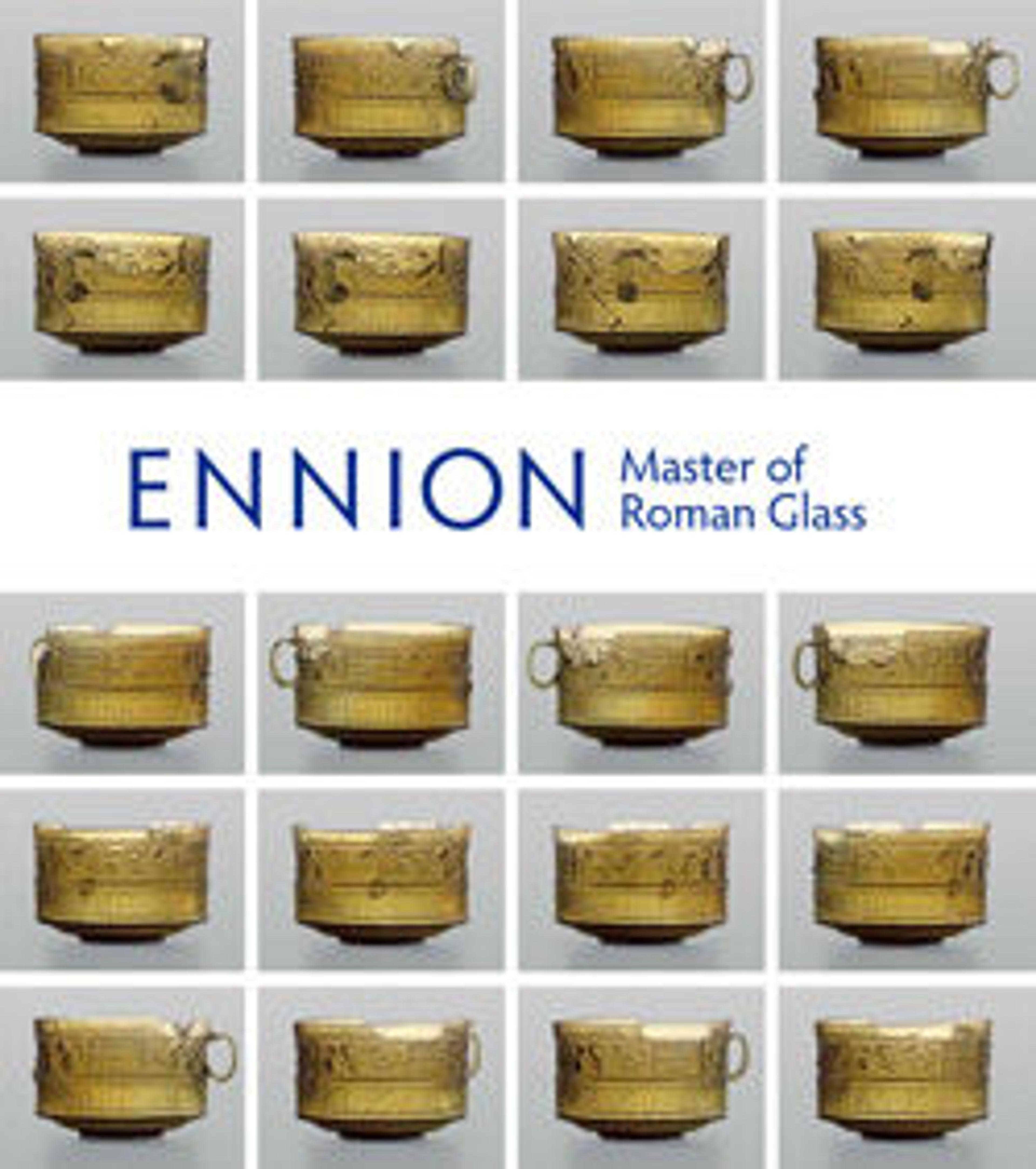Glass bowl fragment with erotic scenes
Opaque white.
Thick horizontal rim with beveled edge; shallow convex curving side.
Molded decoration in relief: on interior, beading on outer and inner edges of rim, bordering figural decoration, comprising a pair of love makers; to their right, remains of the letter A; within body of bowl, another pair of love makers in higher relief, with part of a couch visible below them, and in the field to left part of a two-line Greek inscription: [...].Σ / [...]EI; on exterior, meander pattern on underside of rim; a single concentric line at top of undercurve of side; a band containing a wavy tendril scroll of leaves and flowers populated with a bird facing left; below band, a thicker concentric line around central medallion on bottom, decorated with the squatting figure of a naked woman facing front but with head turned to left and her right hand resting on a reclining figure; in field to upper left, a small projecting object, identified as one of the feet on which the bowl stood.
Broken and chipped with only a small part of the original edge of the rim surviving; bubbles and black impurities; slight dulling, some pitting, but very little weathering.
This fragment is highly unusual not only in its erotic subject matter but also in having the maker’s signature, which is now only partly preserved in Greek letters to the left of the central pair of lovemakers. Other couples decorate the rim and the center of the exterior of the bowl. Together with a fragment from the same mold in the British Museum, it is the only example of a cast or pressed glass vessel with relief decoration on both sides.
Thick horizontal rim with beveled edge; shallow convex curving side.
Molded decoration in relief: on interior, beading on outer and inner edges of rim, bordering figural decoration, comprising a pair of love makers; to their right, remains of the letter A; within body of bowl, another pair of love makers in higher relief, with part of a couch visible below them, and in the field to left part of a two-line Greek inscription: [...].Σ / [...]EI; on exterior, meander pattern on underside of rim; a single concentric line at top of undercurve of side; a band containing a wavy tendril scroll of leaves and flowers populated with a bird facing left; below band, a thicker concentric line around central medallion on bottom, decorated with the squatting figure of a naked woman facing front but with head turned to left and her right hand resting on a reclining figure; in field to upper left, a small projecting object, identified as one of the feet on which the bowl stood.
Broken and chipped with only a small part of the original edge of the rim surviving; bubbles and black impurities; slight dulling, some pitting, but very little weathering.
This fragment is highly unusual not only in its erotic subject matter but also in having the maker’s signature, which is now only partly preserved in Greek letters to the left of the central pair of lovemakers. Other couples decorate the rim and the center of the exterior of the bowl. Together with a fragment from the same mold in the British Museum, it is the only example of a cast or pressed glass vessel with relief decoration on both sides.
Artwork Details
- Title:Glass bowl fragment with erotic scenes
- Period:Early Imperial, Augustan
- Date:end of 1st century BCE–beginning of 1st century CE
- Culture:Roman
- Medium:Glass; pressed in a two-part mold
- Dimensions:Overall: 2 3/16 x 1 1/4in. (5.6 x 3.2cm)
- Classification:Glass
- Credit Line:Gift of Nicolas Koutoulakis, 1995
- Object Number:1995.86
- Curatorial Department: Greek and Roman Art
More Artwork
Research Resources
The Met provides unparalleled resources for research and welcomes an international community of students and scholars. The Met's Open Access API is where creators and researchers can connect to the The Met collection. Open Access data and public domain images are available for unrestricted commercial and noncommercial use without permission or fee.
To request images under copyright and other restrictions, please use this Image Request form.
Feedback
We continue to research and examine historical and cultural context for objects in The Met collection. If you have comments or questions about this object record, please contact us using the form below. The Museum looks forward to receiving your comments.
